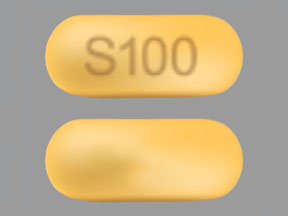
Seysara Coupons & Savings Card – Discount Prices from $229.82
My prescription
Edit
100MG, Seysara (30 Tablets)
Select pharmacy

CVS
$276.82
COUPON PRICE
Albertsons
$229.82
COUPON PRICE
Walmart
$229.82
COUPON PRICE
Walgreens
$276.92
COUPON PRICESeysara savings card
Show this card to your pharmacist
CVS
Couldn't load coupons
We were unable to get coupon information
Powered by
Related tetracycline antibiotics prescriptions
More prescriptions for acne
Related tetracycline antibiotics prescriptions
More prescriptions for acne
Price history for Seysara
30 Tablets, 100MG
Average retail price for Seysara
Average SaveHealth price for Seysara
Our price history data is based on aggregated prescription data collected from participating pharmacies in America. Our prescription data updates daily to reflect the latest price changes. If you notice a missing data point, it means there wasn't sufficient data available to generate a monetary value for that date.
*Retail prices are based on pharmacy claims data, and may not be accurate when we don't have enough claims.
Seysara dosage forms
Dosage Quantity Price from Per unit 60MG 30 Tablets $1088.08 $36.27 100MG 30 Tablets $1088.08 $36.27 150MG 30 Tablets $1088.08 $36.27
| Dosage | Quantity | Price from | Per unit |
|---|---|---|---|
| 60MG | 30 Tablets | $1088.08 | $36.27 |
| 100MG | 30 Tablets | $1088.08 | $36.27 |
| 150MG | 30 Tablets | $1088.08 | $36.27 |
Seysara Warnings
When considering the use of Seysara (sarecycline), it is crucial to be aware of the following safety warnings and contraindications. These details highlight potential risks and provide guidance on precautions necessary for safe use. It is recommended that you discuss any concerns with your healthcare provider.
Pregnancy and Nursing: Seysara (sarecycline) should not be used during pregnancy or while breastfeeding, as it may lead to poor bone development and teeth discoloration in the child. The medication can be transferred through breast milk, potentially causing harm to a breastfed baby. If you are pregnant, planning to become pregnant, or breastfeeding, consult your healthcare provider for safer alternatives. The highest risk occurs during the second and third trimesters of pregnancy and while currently breastfeeding.
Infectious Diarrhea: There is an increased risk of developing an infection with Clostridioides difficile (C. diff), which can cause severe diarrhea. This risk is heightened if you are over 65 or have a weakened immune system. Inform your dermatologist if you have recently used other antibiotics. Discontinue Seysara and seek immediate medical attention if you experience fever, tiredness, or bloody or watery stools, as these may indicate C. diff-associated diarrhea (CDAD).
Dizziness and Light-headedness: Seysara may cause dizziness or a sensation of the room spinning. Avoid activities that require full attention, such as driving, until you understand how the medication affects you. These symptoms may subside with continued use or upon discontinuation. Inform your healthcare provider if these symptoms persist.
Intracranial Hypertension: Though rare, Seysara can increase brain pressure, leading to potential permanent vision changes. The risk is higher if used alongside other medications like isotretinoin. It's advisable to have a vision check before starting Seysara. Report any unusual headaches or blurred vision to your healthcare provider.
Sun and Light Sensitivity: This medication increases skin sensitivity to sunlight or UV light, raising the risk of sunburn. Protect your skin by using sunscreen and wearing long sleeves, even on overcast days, and limit sun exposure.
Drug-resistant Infections: Seysara may lead to infections from drug-resistant bacteria, fungi, or yeast, which are more challenging to treat. Contact your healthcare provider if you develop symptoms of infection, such as fever or chills.
Contraindications:
- Do not use Seysara if you have an allergy to any tetracycline antibiotics. Always consult your healthcare provider to ensure this medication is safe for you.
Seysara Side Effects
When taking this medication, you might experience some common side effects such as nausea, lightheadedness, dizziness, or a sensation of spinning. These are generally mild, but if they persist or worsen, it's important to consult your healthcare provider. Additionally, some users report vaginal yeast infections. Rarely, this medication can lead to more serious side effects that require immediate medical attention. These include an increase in brain pressure, known as intracranial hypertension, which can result in severe headaches, vision changes like blurred or double vision, and persistent nausea or vomiting. This side effect is more common in women of childbearing age who are overweight or have previously experienced intracranial hypertension. Another serious condition, infectious diarrhea caused by C. difficile, may manifest as persistent or foul-smelling diarrhea, abdominal pain, cramping, or the presence of blood or mucus in the stool. If you observe such symptoms, avoid using anti-diarrhea or opioid products, as these can exacerbate the symptoms. In rare instances, prolonged or repeated use of the medication could lead to oral thrush or a new vaginal yeast infection. Look out for symptoms such as white patches in your mouth or changes in vaginal discharge. Furthermore, although extremely uncommon, severe allergic reactions can occur, marked by symptoms such as fever, rash, persistent swelling of lymph nodes, itching or swelling particularly around the face, tongue, or throat, severe dizziness, and breathing difficulties. Should you experience any of these severe side effects, seek urgent medical assistance. Always reach out to your healthcare provider if you notice any unusual symptoms or side effects not mentioned here.
Seysara Interactions
What is the drug Seysara used for?
Seysara is used for the treatment of moderate to severe acne vulgaris in patients who are 9 years of age and older.
Is Seysara better than Accutane?
The effectiveness of Seysara (sarecycline) versus Accutane (isotretinoin) depends on the specific condition being treated and the individual patient's needs. Seysara is an antibiotic used primarily for moderate to severe acne, while Accutane is a retinoid used for severe nodular acne that hasn't responded to other treatments. Accutane is generally considered more potent and is often used for more severe cases, but it also has a higher risk of side effects. The choice between the two should be made by a healthcare provider based on the patient's specific condition, medical history, and treatment goals.
What kind of antibiotic is seysara?
Seysara is a tetracycline-class antibiotic. It is specifically used to treat moderate to severe acne vulgaris in patients who are 9 years of age and older.
What happens when you stop taking Seysara?
When a patient stops taking Seysara, any improvements in their acne may gradually diminish, and the acne could potentially return to its previous state. It is important for the patient to consult with their healthcare provider before discontinuing the medication to discuss alternative treatments or management strategies to maintain skin health. Additionally, stopping Seysara abruptly without medical advice may not be recommended, as the healthcare provider can offer guidance on the best approach to discontinuation.
What is the difference between doxycycline and Seysara?
Doxycycline and Seysara (sarecycline) are both antibiotics used to treat acne, but they have some differences. Doxycycline is a broad-spectrum tetracycline antibiotic that can treat a variety of bacterial infections, including acne. Seysara, on the other hand, is a more targeted tetracycline antibiotic specifically approved for the treatment of moderate to severe acne. Seysara is designed to have fewer effects on the gut microbiota and potentially fewer side effects compared to doxycycline.
